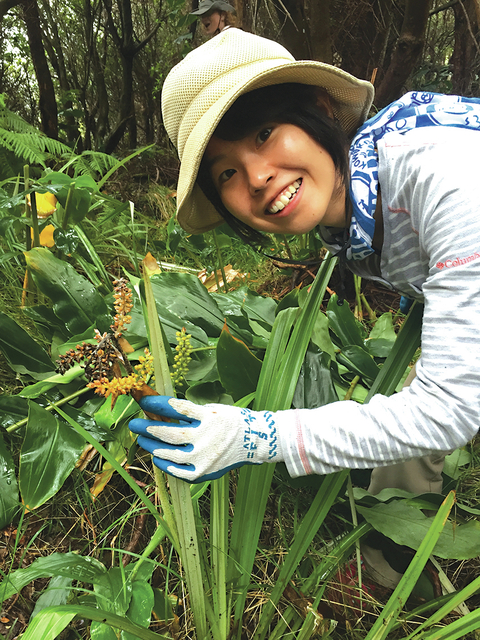Help ensure the future of the Hawaiian rain forest at the summit of Kilauea and volunteer for Stewardship at the Summit programs January through March 2017 in Hawaii Volcanoes National Park. ADVERTISING Help ensure the future of the Hawaiian rain
Help ensure the future of the Hawaiian rain forest at the summit of Kilauea and volunteer for Stewardship at the Summit programs January through March 2017 in Hawaii Volcanoes National Park.
Stewardship at the Summit days are from 9 a.m-noon. The dates are Jan. 6, 14, 21 and 27; Feb. 3, 11, 18 and 20 (Presidents Day and fee-free); and March 3, 10, 18, 25 and 31.
Volunteers help remove invasive, non-native plant species that prevent native plants from growing. Project leaders Paul and Jane Field meet volunteers at 8:45 a.m. at Kilauea Visitor Center on any of the above dates.
Wear sturdy hiking shoes and long pants. Bring a hat, rain gear, day pack, snacks and water. Gloves and tools are provided. No advance registration is required and there is no cost to participate, but park entrance fees apply.
Visit the park website for additional planning details at www.nps.gov/havo/planyourvisit/summit_stewardship.htm.
Volunteers have dedicated more than 7,500 hours of their time and restored more than 61 acres of native rain forest within the national park since 2012. Numerous Himalayan ginger, faya, Australian tree fern, strawberry guava and other invasive, non-native plants that threaten the native understory near the summit of Kilauea volcano have been removed.
In their place, once-shaded ohia trees, amau and hapuu tree ferns have re-emerged, and painiu, kawau and other important native plants are returning to the stewardship plots.
“Hawaii Volcanoes National Park has entered its 100th year of stewarding this fragile ecosystem and we need everyone’s help in making sure the Hawaiian rain forest remains intact beyond the next 100 years,” Paul Field said. “We invite the community and visitors to join us. In addition to giving back to the land, you’ll learn to identify native and invasive plants, how to safely control invasive species and how to avoid spreading other pest species, including rapid ohia death.”
Hawaii Volcanoes National Park provides numerous ways for visitors to connect with and appreciate Hawaiian culture, active volcanoes and native plants and animals. It is a designated World Heritage Site and International Biosphere Reserve.



